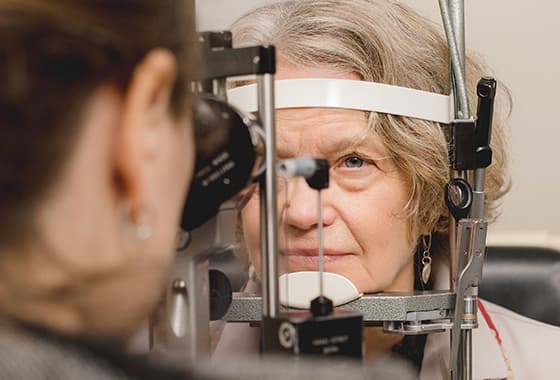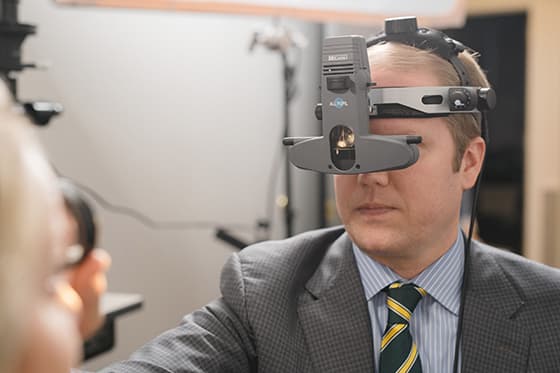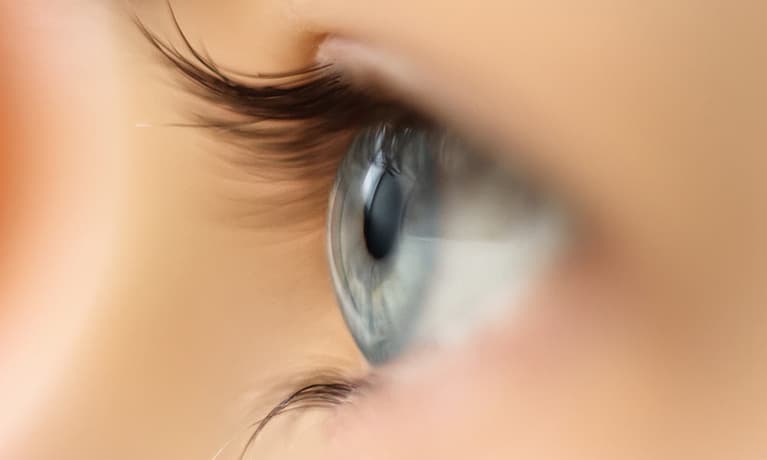What is Glaucoma?

Glaucoma is the leading cause of permanent blindness in the United States, and it is estimated to affect nearly one in every fifty adults. Glaucoma is often called the “sneak thief of sight” because in most cases vision loss appears gradually, unnoticed by the patient until it has become severe. Fortunately, with today’s technology and early detection, loss of sight due to most cases of glaucoma can be controlled.
Because most people with glaucoma have no early symptoms or pain, it is important to have regular, routine eye exams so that glaucoma can be diagnosed and treated before long-term visual loss occurs.
Early detection and treatment by our doctors at Milwaukee Eye Center is important and is the key to preventing full optic nerve damage and blindness.
Detecting Glaucoma
 Glaucoma can be detected during a routine, dilated eye examination before the patient experiences any vision problems. An evaluation for glaucoma is painless and includes checking the pressure or “firmness” of the eye with a tonometer and examining the optic nerve.
Glaucoma can be detected during a routine, dilated eye examination before the patient experiences any vision problems. An evaluation for glaucoma is painless and includes checking the pressure or “firmness” of the eye with a tonometer and examining the optic nerve.
Glaucoma is a condition which damages the optic nerve at the back of the eye. The primary risk factor is elevated eye pressure, also called intraocular pressure (IOP). Most patients who have glaucoma have elevated eye pressure. The fluid produced within the eye, called aqueous humor, leaves the eye via a drainage system in the front chamber of the eye. When production and removal of the fluid are out of balance, the pressure rises. Over years or decades, increased pressure within the eye results in damage to the optic nerve. This damage causes a slow, progressive loss of vision, starting with peripheral vision loss and ultimately affecting central vision.
Causes of Glaucoma
The exact cause of optic nerve damage from glaucoma is not fully understood. It may be a combination of mechanical compression, decreased blood flow to the optic nerve, anatomy, heredity, and factors that remain to be identified. Although high eye pressure is an important factor that leads to glaucoma, many people can also develop glaucoma with “normal” pressure.
Most Common Forms of Glaucoma
The many forms of glaucoma have one thing in common: permanent damage to the optic nerve causing vision loss.
- Primary open-angle glaucoma is the most common form of glaucoma and develops slowly over time, generally after age 35. Typically there are no symptoms. The drainage of aqueous fluid from the eye gradually becomes impaired leading to increased eye pressure. If this increased pressure results in optic nerve damage, it is known as chronic open-angle glaucoma.
- Low-tension glaucoma is characterized by progressive optic nerve damage and visual field loss with normal eye pressure. Low tension glaucoma is possibly related to poor blood flow to the optic nerve, which leads to the death of the cells that carry impulses from the retina to the brain. This type of glaucoma is becoming increasingly more common.
- Angle-closure glaucoma (less than 10% of all glaucoma patients) results when the drainage angle at the front of the eye narrows and can become completely blocked. In this form of the disease, aqueous humor drainage is impaired by to very narrow drainage angles that are blocked by the iris. Angle closure usually occurs in people who are farsighted or in whom the front chamber of the eye is shallow. This condition can occur slowly and progressively or very quickly. When the drainage angle of the eye suddenly becomes completely blocked, pressure builds up rapidly, and this is called acute angle-closure glaucoma. The symptoms include severe eye pain, blurred vision, headache, rainbow halos around lights, nausea and vomiting. Unless an ophthalmologist treats acute angle-closure glaucoma quickly, blindness can result. This type of glaucoma can be prevented by a laser procedure called peripheral iridotomy, in people who are at risk.
- Congenital glaucoma is a rare form of the disease affecting babies, with 80% of these cases diagnosed by age one.
- Pigmentary glaucoma is an uncommon form of the disease caused by pigment from the iris clogging the drainage angles, preventing aqueous humor from leaving the eye. Pigmentary glaucoma affects mostly middle aged patients with near-nearsightedness. This form of glaucoma responds well to laser treatment
- Secondary glaucoma develops after trauma or disease damages the drainage system. Injury, infection, inflammation, tumor or an enlarged cataract can lead to secondary glaucoma.
Who’s at risk?

There are several risk factors for glaucoma:
- Patients over the age of 60
- African-Americans are four times more likely to have glaucoma
- Family history of glaucoma
- Previous trauma to the eye
- Myopia – severe nearsightedness
- Diseases affecting circulation
Click here to read more about how glaucoma can be treated.
To schedule an appointment for an eye exam and glaucoma screening, please call Milwaukee Eye Care at 414-271-2020.










